Pros: More luxurious than mechanically identical RAV4 Hybrid; excellent fuel economy for an SUV; Lexus-like looks and quality
Cons: Less spacious and versatile than mechanically identical RAV4 Hybrid; wonky touch controls; a bit slow
The 2024 Toyota Venza is either the answer for those who want a ritzier RAV4 Hybrid or a less expensive Lexus NX 350h. They’re all based on the same platform and have basically the same hybrid engine (the only way to get a Venza), so it ultimately comes down to design, interior quality, feature content, utility and price. Basically, the Venza sits in the middle, though does skew a bit more in the fancier, Lexus direction.
Why would Toyota go to the effort to slice its small SUV pie even thinner? The answer is that not a lot of effort was required: the Venza is a rebadged version of the Japanese-market Toyota Harrier. Once upon a time, that name was effectively attached to the Lexus RX in Japan, which helps explain why the Venza is so luxurious inside. Indeed, it is more stylish and of a higher quality than the rather utilitarian RAV4. It’s for this reason that Toyota feels comfortable positioning the Venza against pricier midsize SUVs like the Honda Passport and Chevrolet Blazer even if its dimensions are a bit smaller than the compact RAV4 (most notably in the cargo area). A relative lack of power despite relatively exceptional fuel economy is another reason why that “midsize” placement makes the Venza a Granny Smith in a basket of Florida oranges.
Nevertheless, there is merit to considering the Venza. For some, its added luxury and style could be enough to outweigh its reduced utility and elevated price compared to the RAV4. For most, though, we’d probably just go with the RAV4.
Interior & Technology | Passenger & Cargo Space | Performance & Fuel Economy
What it’s like to drive | Pricing & Trim Levels | Crash Ratings & Safety Features
What’s new for 2024?
The Venza carries over unchanged for 2024.
What are the Venza interior and in-car technology like?
Similar to its exterior styling, the Venza’s interior design is a key area where it differentiates itself from the RAV4. Instead of a blocky, off-road look, the Venza features a sharp, modern and highly styled interior. It’s entering Lexus territory in its highest trim. Distinctive color schemes, contrast dash/seat stitching, and prominent technology help bring the design together. Functionally, the XLE and Limited are hamstrung versus the LE, though. Both the mid-grade and top trim have touch-capacitive controls for the audio and climate systems, which are difficult to identify and operate while driving. The base LE uses physical buttons, which are much easier to use even if they don’t look as fancy.
The big dash-top screen is the interior’s centerpiece. It measures 8 inches on the LE, but the XLE and Limited get a 12.3-inch unit. The operating system is the newest Toyota has to offer, featuring bright, minimalist graphics and natural speech recognition. It’s responsive and runs quickly. The shortcut icons on the side closest to the driver are easy to reach, but they unfortunately disappear when you use Apple CarPlay or Android Auto, meaning you have to click-click-click to escape the Apple/Android interfaces rather than using a simple Home button like Toyota used to feature. There are other annoyances we discovered, particularly with the radio operation, that can make the new system less user-friendly than what you’d find in most rival systems.
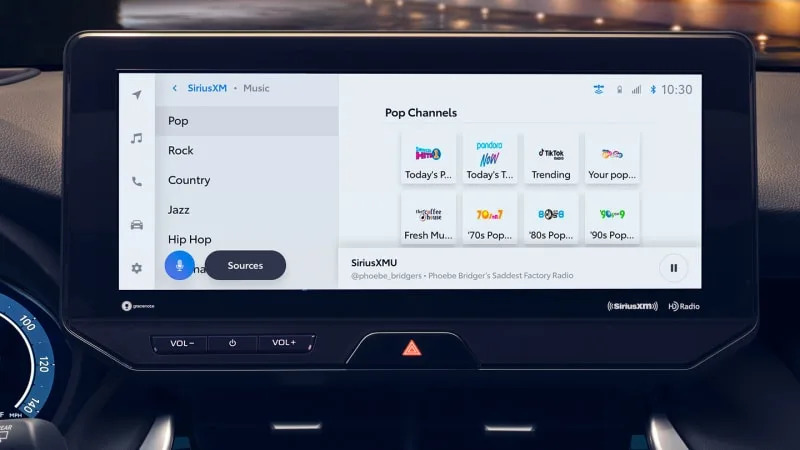
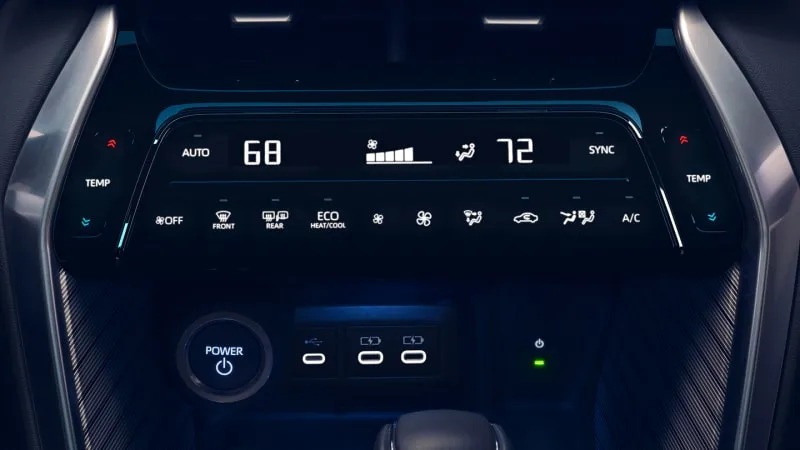
How big is the Venza?
Toyota considers the Venza to be a midsize crossover competitor. Maybe in terms of price, interior ambiance and Toyota’s lineup hierarchy, but not in terms of actual size. As our spec comparison shows, it’s on the smaller side of this class versus cars like the Honda Passport, Hyundai Santa Fe and Chevrolet Blazer. Think of it more as a glorified, style-first RAV4 than a truly utilitarian family crossover.
As a result of this style-over-utility choice, the Venza has significantly less cargo space (28.8 cubic feet behind the second row) than the RAV4 (37.5 cubic feet) despite being 5.7 inches longer overall — see our Toyota cargo test comparison for more on what fits in the cargo area. Rear legroom is identical between the two (37.8 inches), but that says more about the RAV4 given their equally generous amount. Thankfully, the Venza’s roofline doesn’t cut into rear-seat headroom enough to be bothersome unless you’re especially tall. The bigger concern is the optional Star Gaze fixed glass roof, which drops rear headroom by a significant 2.1 inches.
The Venza also doesn’t have roof rails. There are mounting points for aftermarket attachments, but those aren’t as convenient as what you’d find on various RAV4 trim levels.


What are the Venza fuel economy and performance specs?
The 2024 Venza is only available as a hybrid. It’s almost a direct lift from the RAV4 Hybrid, with the main differences being its battery pack chemistry (pricier lithium-ion instead of nickel-metal hydride) and final tuning. Otherwise, you get the same 2.5-liter four-cylinder aided by a trio of electric motors, one of which powers the rear axle to effectively provide standard all-wheel drive. Total system output is 219 combined horsepower, which is pretty weak for something advertised as a midsize crossover. It’s exactly what you’d expect from a hybrid compact crossover, go figure.
On the upside, fuel economy is almost identical to the RAV4, meaning the Venza returns exceptional fuel economy for a vehicle of its size that absolutely demolishes its midsize, non-hybrid competition (the Kia Sorento and Hyundai Santa Fe offer hybrid trims). EPA estimates are the same as those from 2023: 40 mpg city, 37 mpg highway and 39 mpg combined.
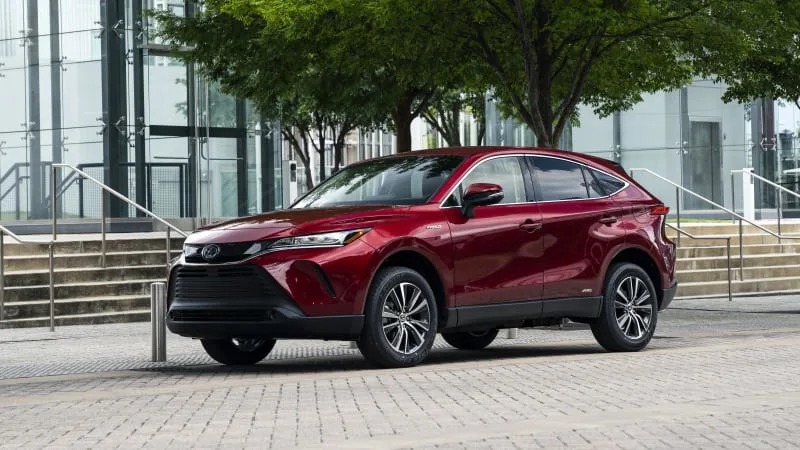

Venza LE
What’s the Venza like to drive?
The Venza may look like a sporty crossover, but it really isn’t. Toyota doesn’t provide a 0-60 mph estimate, but the RAV4 Hybrid gets there in 7.8 seconds and the Venza is approximately 130 pounds heavier. It should therefore be even slower, putting it well in the rearviews of most compact and midsize SUVs. At least it feels quicker off the line than the numbers suggest due to the electric motors, but like all Toyota hybrids, there’s plenty of droning under full acceleration that does little to convey a sporty intent.
The Venza rides on the same TNGA-K variant of Toyota’s corporate platform and even shares the RAV4’s 105.9-inch wheelbase (the Lexus NX is mechanically related as well). Road imperfections and potholes are soaked up admirably, and highway cruising is both quiet and comfortable. However, the wind and road noise is not reduced to Lexus-quiet levels of serenity.
At no point does the Venza ever encourage the driver to push it through a winding road. The rear electric motor does a bang-up job of keeping the front wheels from being overwhelmed, but this is no performance-oriented all-wheel-drive system. The eco tires give up quickly, and you can really feel the heft of the tall body around corners. If you’re looking for a more engaging driving experience in Toyota’s lineup, the RAV4 Hybrid XSE and new RAV4 Prime plug-in hybrid do a much better job.
What other Toyota Venza reviews can I read?
2021 Toyota Venza First Drive | It’s back!
Our first spin in the revamped Venza. Here we go over the design, engineering and provide further driving impressions.
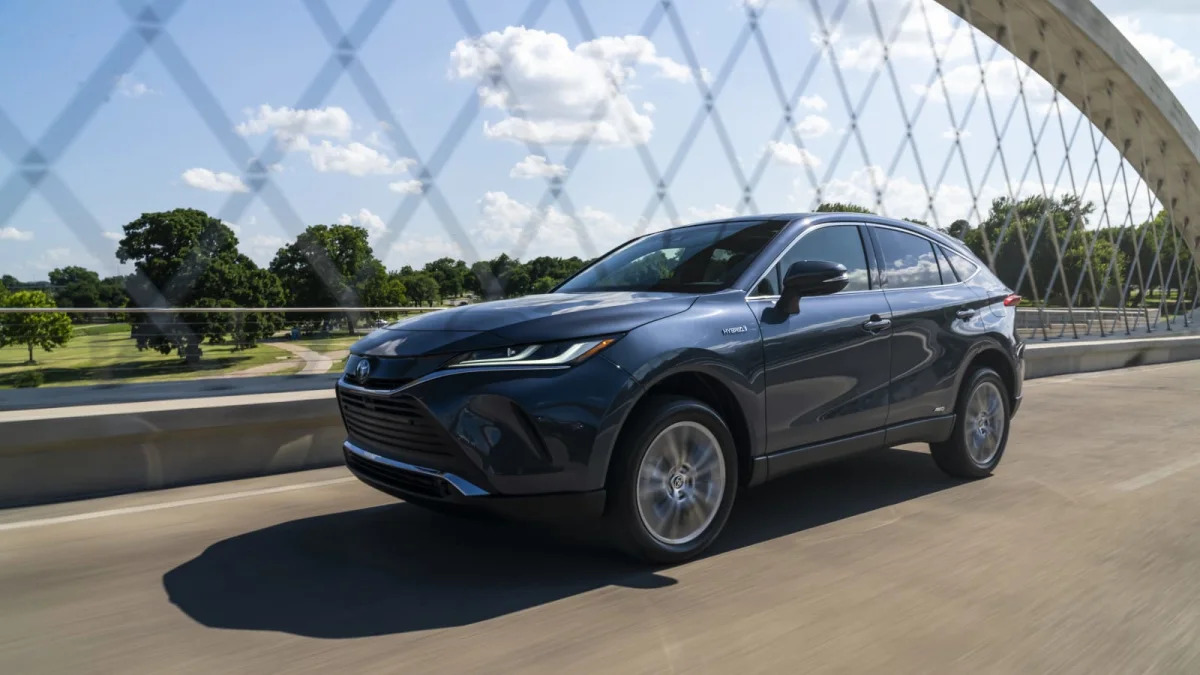
2021 Toyota Venza vs Toyota RAV4 Luggage Test | Which one fits more?
Our West Coast Editor compares the luggage space of the new Toyota Venza with that in a RAV4 to show the real-world differences between the two.
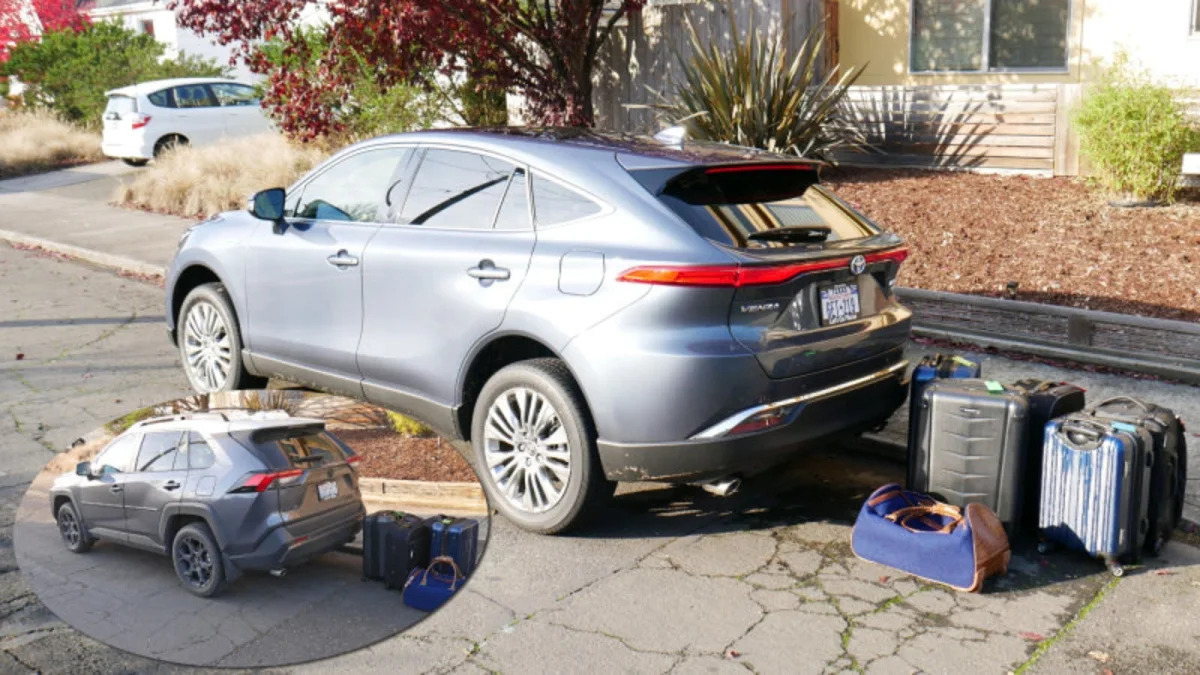
Toyota hybrid crossover comparison | How the Venza, RAV4 Hybrid and Highlander Hybrid compare on paper
We pit all three of Toyota’s popular hybrid crossovers against each other to see how the new Venza compares. Note that the RAV4 looks a little different now, but its specs are basically the same.

2021 Toyota Venza vs midsize crossovers: How they compare on paper
Here’s how the new Venza stacks up versus the competitors in its segment like the Ford Edge, Nissan Murano and Honda Passport.
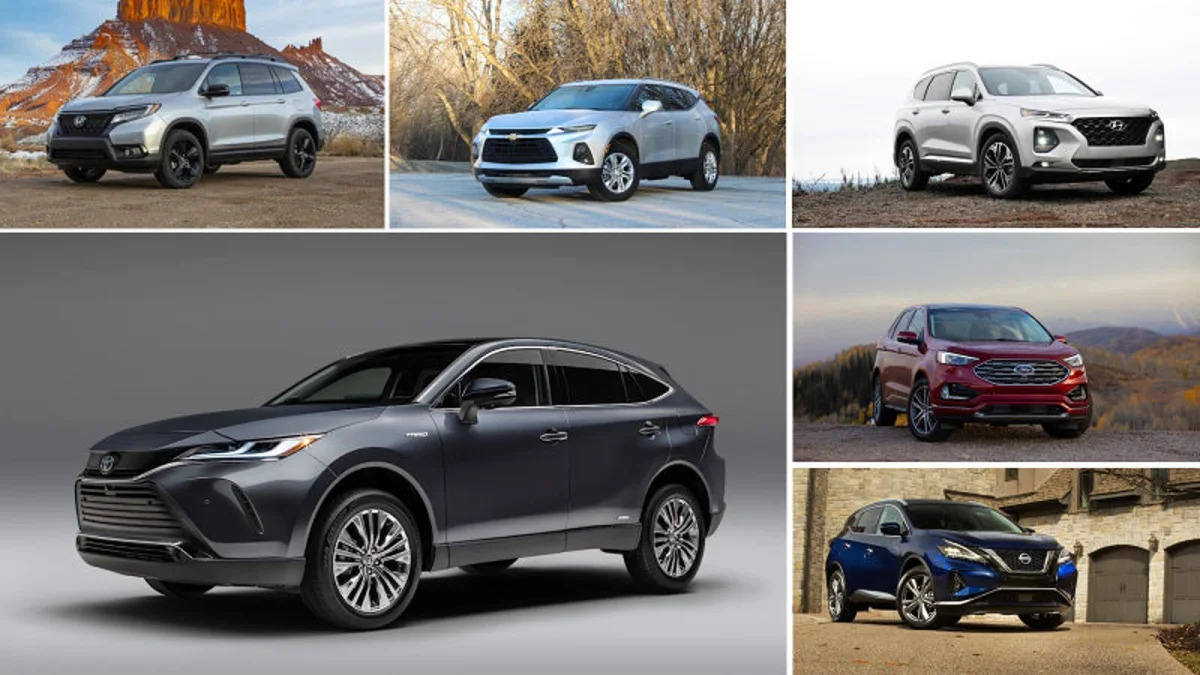
What is the 2024 Venza price and where is it made?
Pricing for the Venza starts at $36,315, including the mandatory $1,395 destination charge. That’s $3,490 more than the base RAV4 Hybrid LE. On the other hand, it’s also $7,890 less than the mechanically related Lexus NX 350h.
Which version would we choose? The base model’s ample equipment and physical controls would make us strongly consider going with it, but it’s also hard to argue with the XLE’s simulated leather upholstery (versus cloth), heated seats, upgraded interior materials and new, jumbo touchscreen. We’d probably skip the Nightshade because $1,100 seems steep for some blacked-out trim (though people do seem to love it) as well as the Limited. It’s basically the same price as the NX 350h, and even if a bit better equipped, wouldn’t you rather own a Lexus?
All prices below include the $1,395 destination charge.
LE: $36,315
XLE: $40,525
Nightshade Edition: $41,650
Limited: $44,460
As the Venza is basically a rebadged version of the Japanese market Toyota Harrier, it is built in Toyota City, Japan. All RAV4s but the Prime are built in North America.
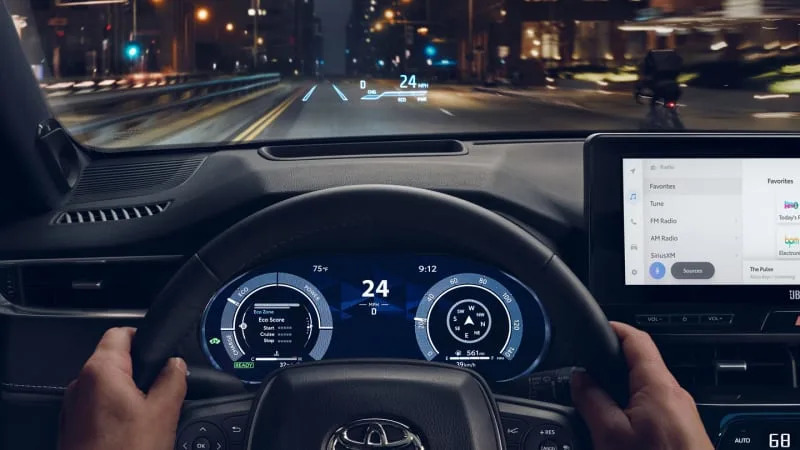

What are the Venza safety ratings and driver assistance features?
Toyota makes its full suite of driver assistance systems standard in the 2024 Venza. Those include automatic emergency braking (with pedestrian and cyclist detection), emergency steering assist, lane departure warning and lane-keeping assist, adaptive cruise control with lane-centering steering assist, blind-spot and rear cross-traffic warning, auto high beams and road sign recognition. Parking sensors and reverse automatic braking are also now standard on every Venza.
The NHTSA gave the Venza five out of five stars for overall crash protection, including four stars for frontal protection and five stars for side protection. The Insurance Institute for Highway Safety named it a Top Safety Pick for its sufficiently high scores in crashworthiness, crash avoidance and headlight performance. The latter failed to net a best-possible “Good” rating, meaning the Venza missed out on the best-possible Top Safety Pick+ rating.
Read the full article here


